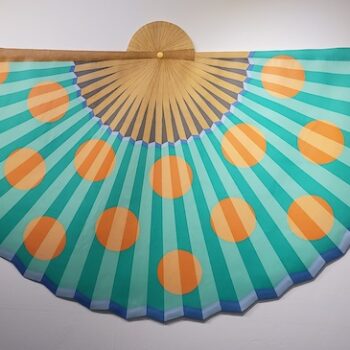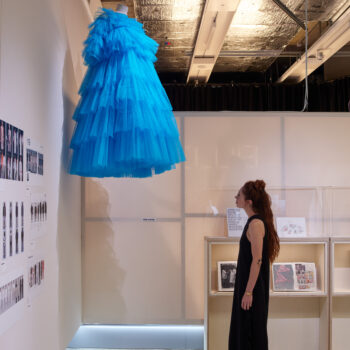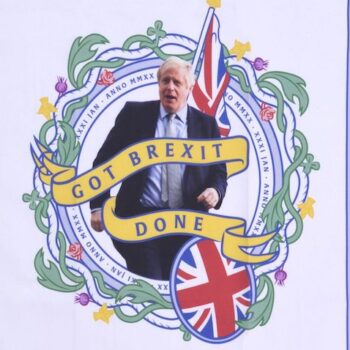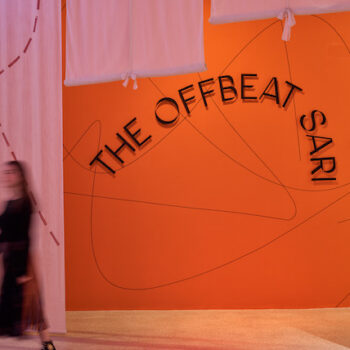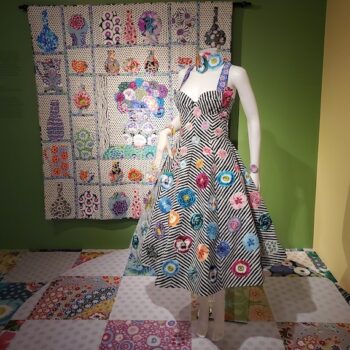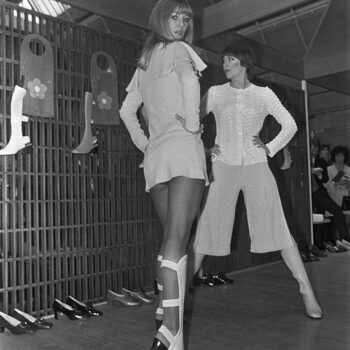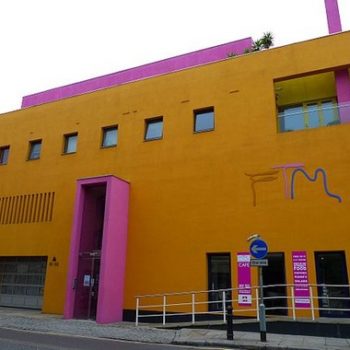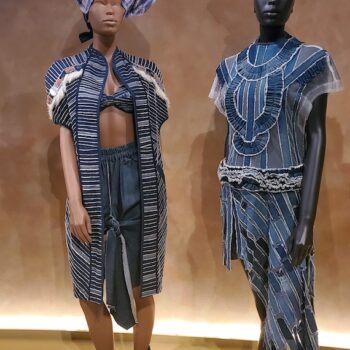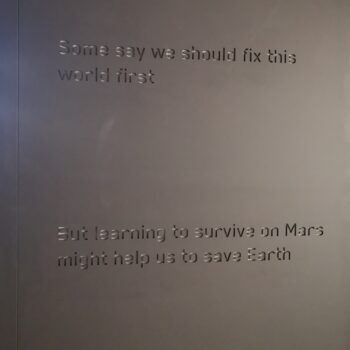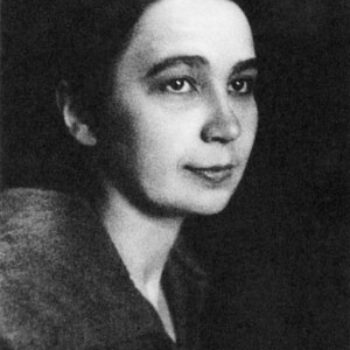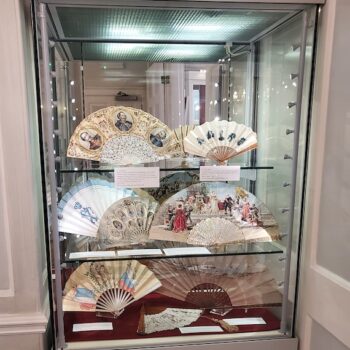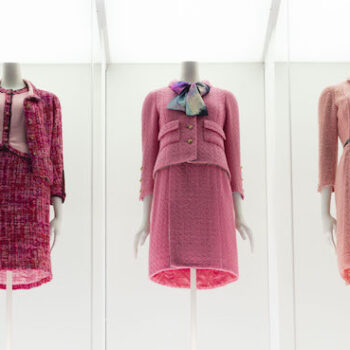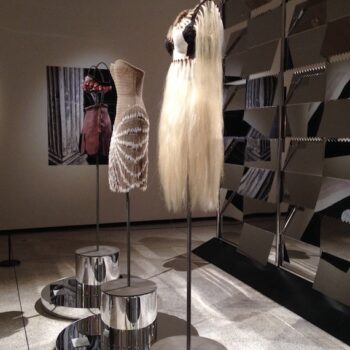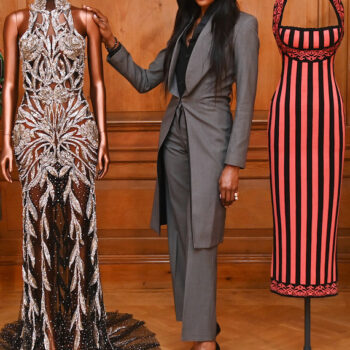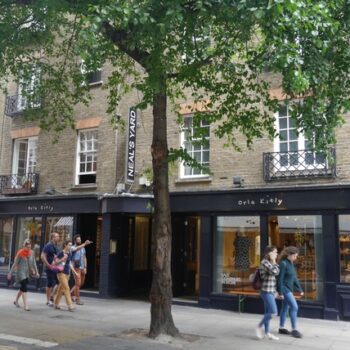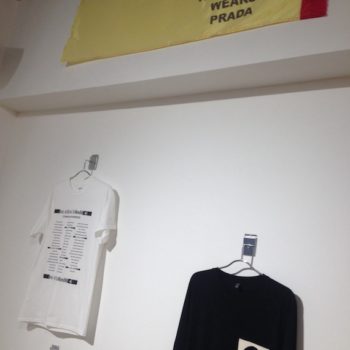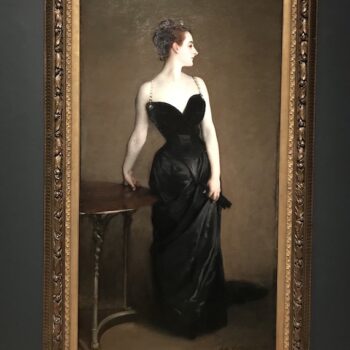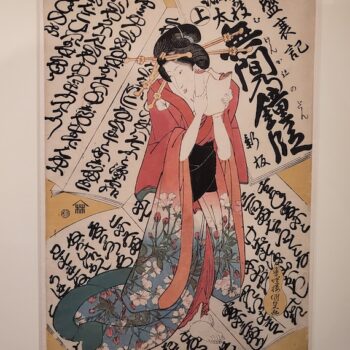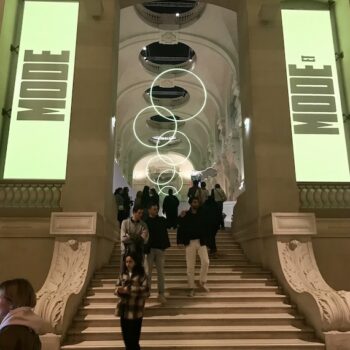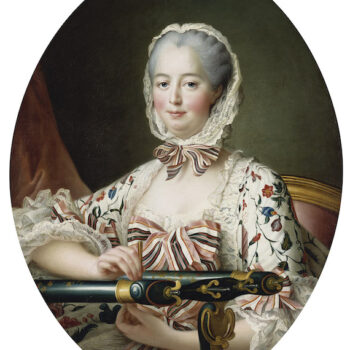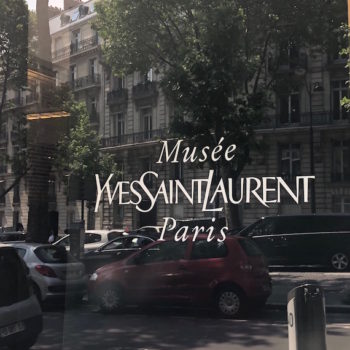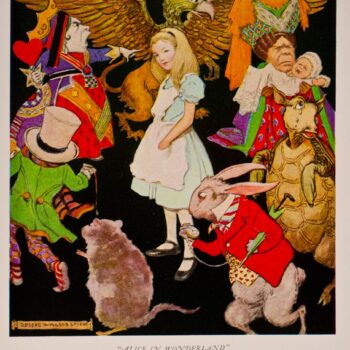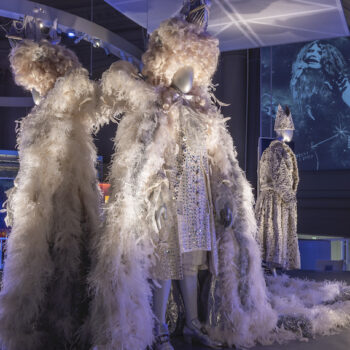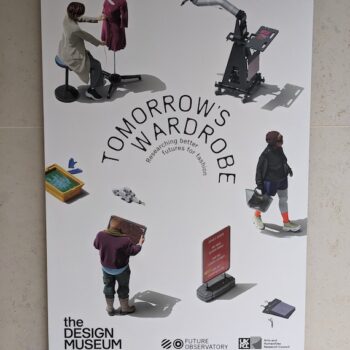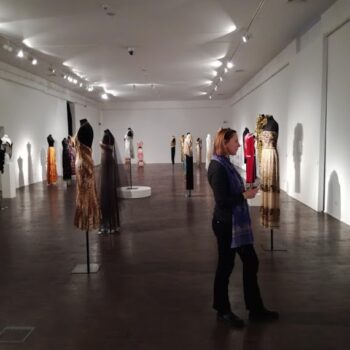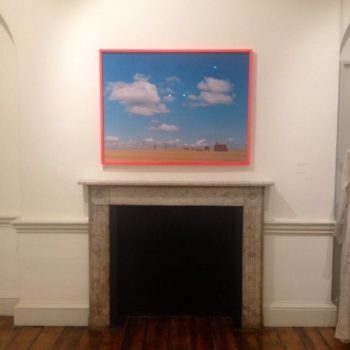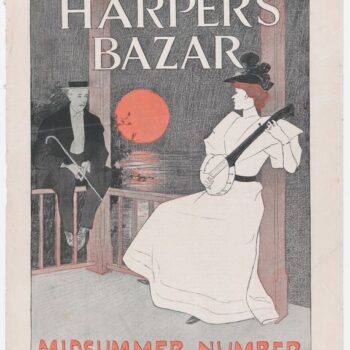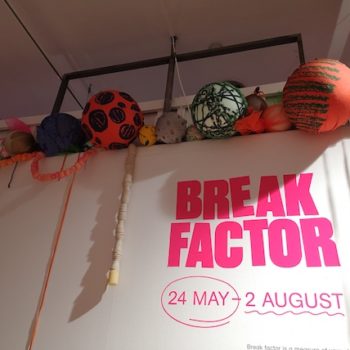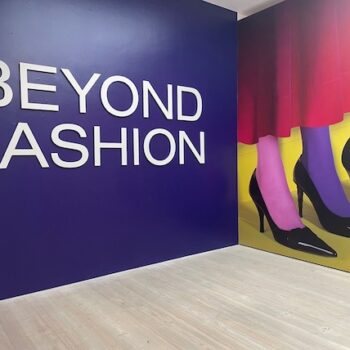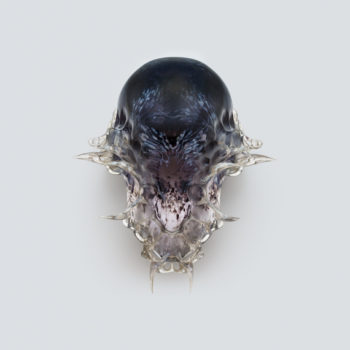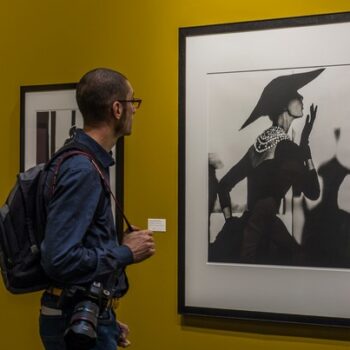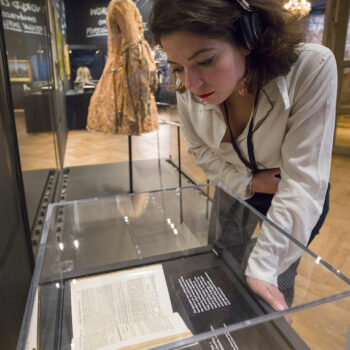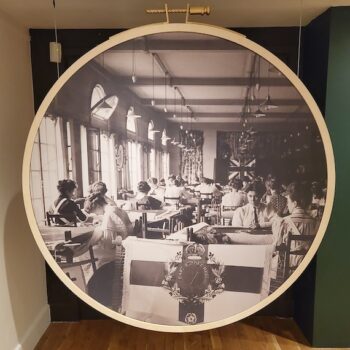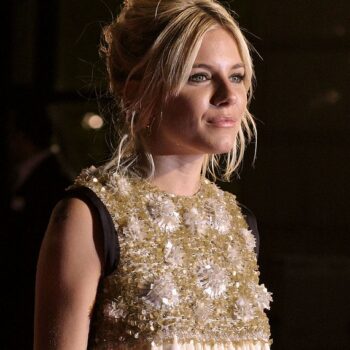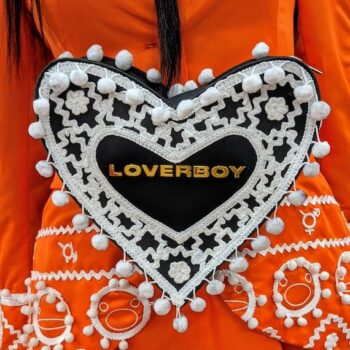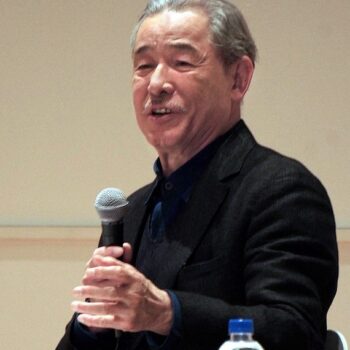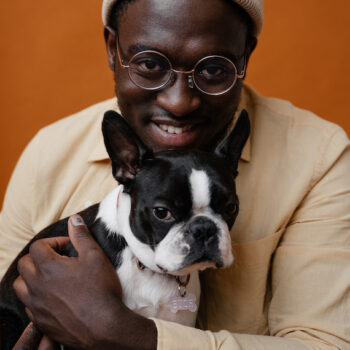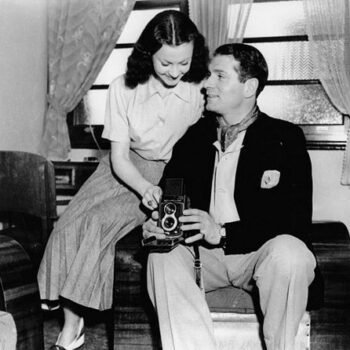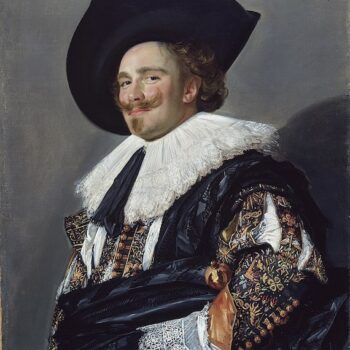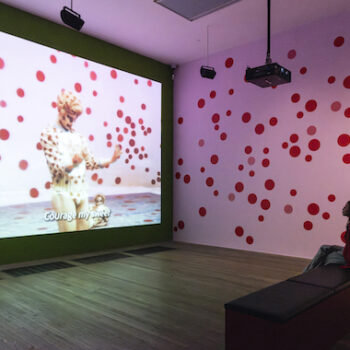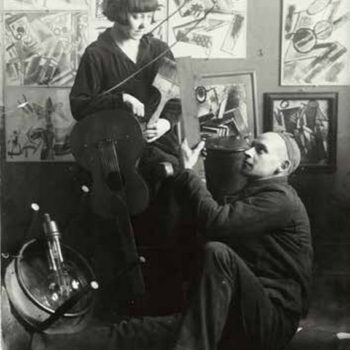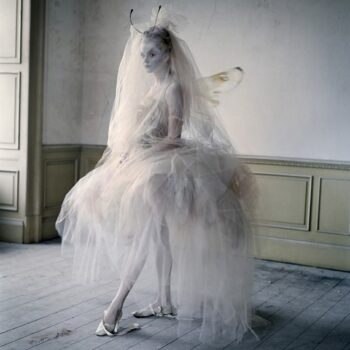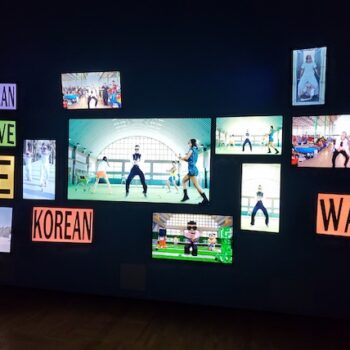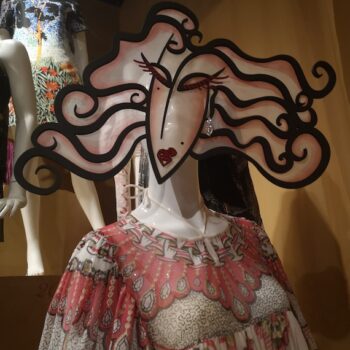Review – Andy Warhol: The Textiles at the Fashion and Textiles Museum.
August 6, 2023This exhibition focusses on Andy Warhol textiles. We still see Marilyn Monroe in four brash colours on pencil cases and tote bags these days, but even when Andy Warhol was alive he produced wrapping paper, gift cards, and fabric which was specifically designed in his studio. The show includes many original artefacts, such as garments and lengths of fabric.
Andy Warhol Textiles – A Great Chunk of History
The exhibition is all hung and lit exceptionally well. The backdrops are kept entirely matt black, with spotlit items which, as they are all very colourful, stand out perfectly. The text is white on black which can be tricky to read, but in this case is very legible. Black and white photos of Andy Warhol are strategically dispersed.
The fabrics are so, so charming. Although they recognisably come from the eras they were made in, (the 50s and 60s), there are many which could still be worn today without looking dated. In particular there is a really vibrant pink and orange pomegranate print on a black background, which reminds me of the trend for dark florals spearheaded by Erdem a few years ago. There is also a lime green jumpsuit which definitely looks current.
Novelty or “conversational” prints were all the rage in those decades and every single example reflects that. There are prints based on butterflies, bugs, fruit, pens, pencils, footwear, socks, hats, flags, perfume bottles, and circus scenes. There are flowers in plant pots. Even the abstract florals are bold and have an illustrational outline.
The Great Shopper

Andy Warhol textile design. Ice cream cone dresses – one featuring padding. Image via the Fashion and Textile Museum.
Warhol loved shopping. He was no ivory tower style artist and he really liked to spend his weekends in department stores picking out socks or underwear, or antiquing with his friends. He collected a great deal of things, a lot of it pretty kitsch. So he would have been very well aware of contemporary trends in fabrics and womenswear, as well as getting a good supply of inspiration for subjects.
The Factory
Andy Warhol’s Factory was a collaborative effort, and while he had an interest in films, screen print, and other artistic practices, he didn’t make everything himself. In fact, by the end of his life he just sat in his office, peering out at his busy assistants. Even before he assembled the Factory, since the early days he had at least one assistant. This is obliquely referenced by the wall text early on, which explains that once he had developed his broken and blotted line techniques, made by tracing over a pencil sketch with ink and pressing blotting paper on top, it became a recognisable Andy Warhol textiles signature look. So his assistants could create designs using the same technique and consumers would be none the wiser.
Another Andy Wharhol textiles method was to carve up rubber erasers into rubber stamps. It’s a surprisingly child-like technique that was used extensively, even on sophisticated silks. I was waiting to hear they also liked potato prints, as I’d like to imagine a circle of drag queens and speed freaks earnestly sitting on the floor and splodging out designs that way. However, sadly there’s no mention of that.
It’s a shame with this exhibition that there is little to no exploration of the background to this work. No sketch books working out designs, no layout or colourway experiments, or photos of Andy or his assistants working. There are a few reproductions of contemporary magazine pages showing models in the clothes made with the fabrics.
A Decade of Andy Warhol Textile Design
Andy Warhol started being commissioned for fabrics around about 1954. He always wanted to be a fine artist, and he had shows in galleries since arriving in New York. In 1952, he had his first solo show at the Hugo Gallery, New York, and although it didn’t really go down well, by 1956 Warhol was included in his first group exhibition at the Museum of Modern Art, New York.
His pop art work, as in the repeated images mounted on canvas, were first shown in the Ferus Gallery in Los Angeles in 1962. They were the notorious Campbell’s soup cans and Coca-Cola bottles. In this case, they were “portraits” of each flavour of soup, individually mounted and framed, rather than all appearing together on one canvas. They soon morphed into this, and the similarity to the process of fabric design with its repeating motifs can’t be denied.
A year later, the commissions, or the desire to do them, petered out. There doesn’t seem to be any known fabrics or giftware designed by Andy Warhol past 1963. It is probably not because he wanted to jettison his commercial past in order to make it as a fine artist. Warhol was very proud of his business art and unashamed of wanting to make money. In fact, in the 70s he pronounced: “Being good in business is the most fascinating kind of art. Making money is art and working is art and good business is the best art.”
Andy Warhol textiles – Suggestive
Sometimes he would do a magazine cover or record sleeve if he felt like it – notably the famous “Banana” cover for the Velvet Underground in 1967. Warhol actually managed the band so perhaps that was what piqued his interest in creating one last fruit illustration. This one was not an innocent image of scattered apples and pears, however. Instead it was a highly suggestive sticker in the shape of a banana on the shiny album cover. Buyers were invited to “Peel Slowly and See.” The image of the unpeeled banana beneath was pink.
But back to the exhibition. It’s a wonderful little chunk of rather wholesome Warhol textiles history and definitely a must-see for fans.
Andy Warhol: The Textiles is at the Fashion and Textiles Museum until the 10th September 2023.



